
FixThePhoto Verdict: ★★★★☆ (4.5/5)
If you're looking for a versatile camera that's easy to learn, the Canon EOS R10 is an excellent option. It has a compact body that houses a powerful image sensor and a rapid autofocus system. You can rely on this model when shooting portraits, landscapes, or taking action shots. Thanks to the R10's 15 frames per second burst rate, you'll never miss a moment.
|
|
|
|
✔️ Compact and lightweight |
❌ Limited lens selection |
Key Specifications:
I was very excited to open up my new Canon EOS R10. The packaging was compact and well-thought-out. Every element was securely in place. Inside, I saw the camera body, a standard LP-E17 battery, a simple charger, a camera strap, and the standard user guides.
If you've opted for the kit, you'll also find the 18-45mm lens. It is surprisingly compact. This Canon camera feels well-built and lightweight. I think it is an ideal model for everyday shooting, especially if you don’t feel like carrying heavy equipment around.
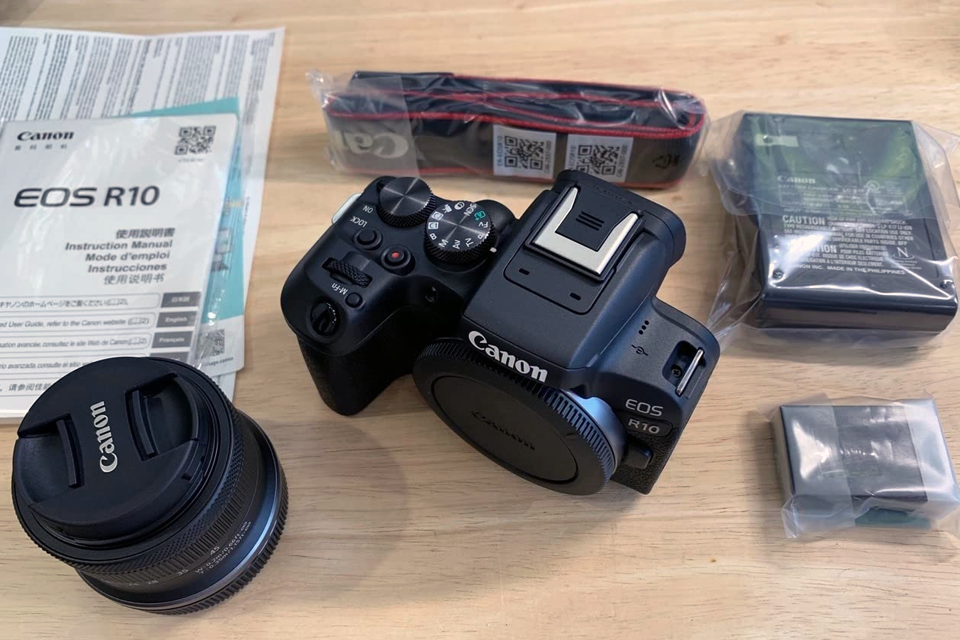
I was able to set up the camera without any hassle. The menu system is packed with features but is easy to navigate. That’s why I believe the R10 Canon model will please beginners. Once it was ready for photographing, I evaluated the autofocus.
I was impressed by how quickly and precisely it worked. The Dual Pixel CMOS AF II is excellent at tracking subjects, even fast-moving ones. I tested it on my dog, who was actively running around. The camera preserved focus sharp, no matter how frantic the movement was.
The camera is equipped with a 24.2MP APS-C sensor, which produces clear, colorful photos with plenty of detail. It's sufficient for everyday shots, like street photography, casual portraits, and close-ups. I have noticed that it performs well in bright light, but the results are less impressive in low-light environments. In fact, you may notice noise but it is typical for APS-C sensors.
I have tested Canon R10 for 7 days and can sum up that it is a great choice for those seeking a mid-range device. It absolutely suffices for everyday shooting and can feel like an upgrade from smartphones or entry-level DSLRs.
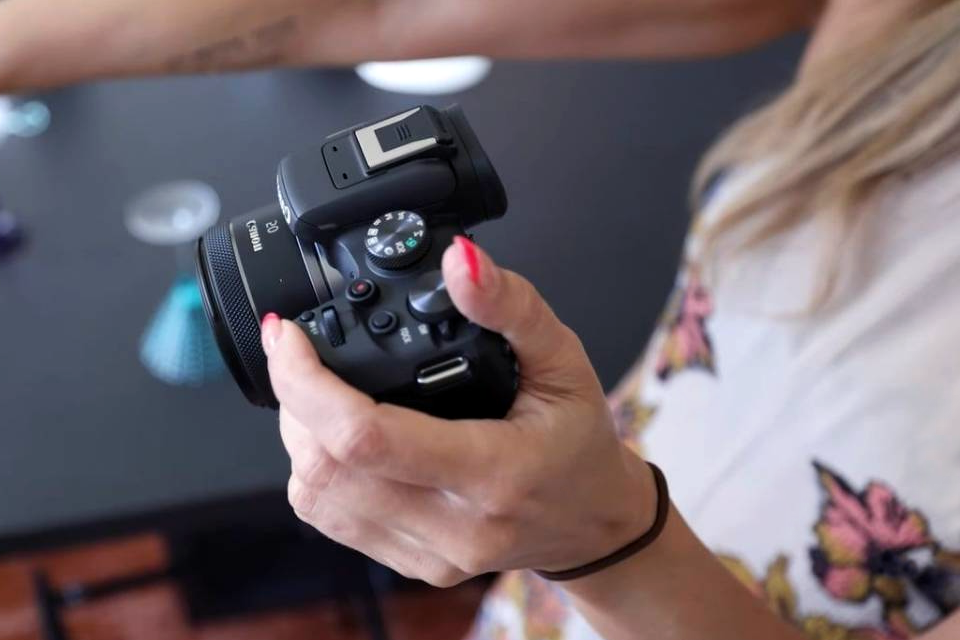
Frankly speaking, I was initially hesitant about the Canon EOS R10's lightweight, plastic body. I wondered if it would feel flimsy over time. But after using it for a while now, I've been pleasantly surprised. It can really withstand regular use. Even though it's light, it feels really solid and has been my shooting partner in the most challenging situations.
An important advantage of this camera is its compact build. What’s more, it's packed with useful features that you typically expect to see in more expensive models. I appreciate the dedicated AF/MF switch and the dual control dials. With them, it is easy to make manual adjustments. But, the smaller size comes with a smaller battery.
Moreover, the Canon R 10 lacks weatherproofing, which can be a drawback in harsh weather. Plus, the absence of a headphone jack may disappoint those who like to record videos. Still, you shouldn’t demand much from a camera for amateur photographers.
The grip on this camera is fantastic. It’s very comfy and fits my hand perfectly, even when I’m wearing large-sized gloves. The manufacturer also chose a great place for a shutter button. With a little groove for my middle finger, I can easily press it repeatedly. Generally, I’m grrateful that I can reach all the buttons without having to adjust my grip.
Another thing that impressed me about the R10 is the easy switch to manual setting. If you want to take control of your photography, this camera is worth checking out. The layout of the buttons and dials is excellent, and I especially like the dedicated ISO button and the joystick for selecting focus points. The dials feel sturdy and have a nice click. As for the less pleasing aspect, the beginner's menu tutorial is a bit confusing. In fact, I turned it off.
I also had problems with some buttons. The four-way controller is strangely positioned. My hand often brushes against it, leading to accidental button presses. Also, the lock button is placed too close to the video record button. That’s why, I press it by mistake during fast-paced shooting. No wonder, it is annoying.
The 2.36-million-dot OLED viewfinder works without issues. However, the magnification leaves much to be desired. It's fine for most shooting scenarios, but it lags behind premium cameras when it comes to detail. The Canon R10 camera also has a fully articulated touchscreen. Thus, you can use this flip screen camera to take selfies, shoot from all imaginable angles, or quickly adjust settings. Besides, it is possible to tap to focus, change settings, or take images. Still, during my test, I noticed that when I used the touchscreen to take pictures, the camera shook a bit.
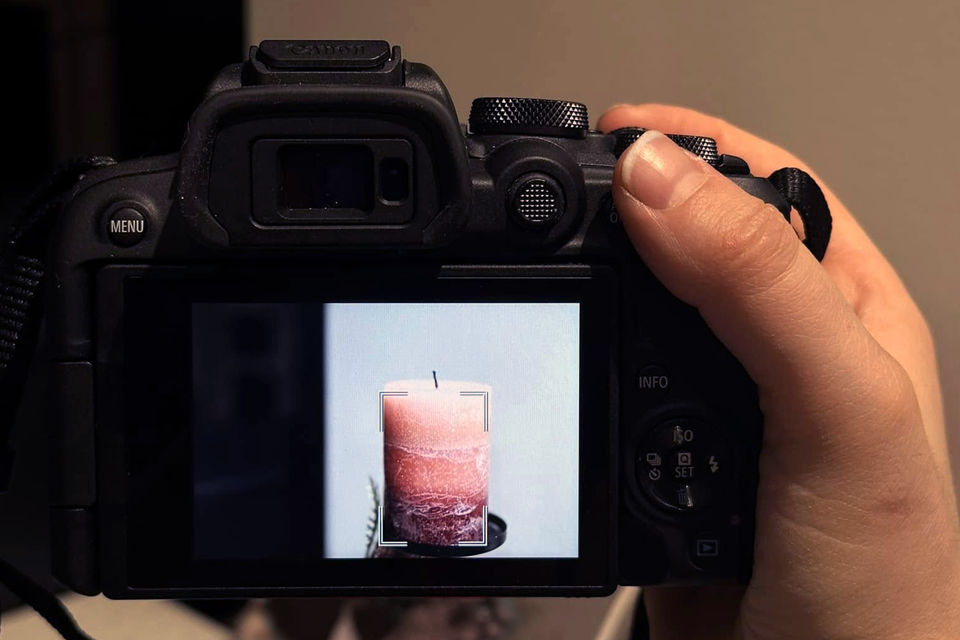
The Canon R10 image quality is amazing. The camera can pick up fine details and capture vibrant colors in different lighting conditions. I also tested it with different settings, and I love the results every time.
I know that the 24-megapixel sensor is similar to what we've seen in earlier Canon cameras like the EOS M50 II. Still, the company improved it and now you can get better results in low-light scenarios when shooting RAW. However, when comparing the EOS R10 Canon to the Fujifilm X-S10 and Nikon Z fc, it still lags behind a bit.
I want to highlight the color reproduction of this mirrorless camera for beginners, especially for JPEGs. The colors are bold and saturated, particularly the pinks and reds. The blues are also very nice and clear. I like how the yellows are handled too - they're bright and true to life. Therefore, I received photos that looked cheerful and lively. Few camera brands can offer the same capabilities for this money.
The only downside I've noticed is that the JPEGs are slightly too sharp straight by default. Thus, your images may look a little overprocessed, especially when you zoom in. But don't worry, you can easily tweak the sharpness settings or shoot in RAW to receive more lifelike pictures.
The noise reduction in JPEGs is pretty effective, especially considering the price point. You may notice a slight smoothing of fine details in low light, but the overall image quality is still quite good. If you're not planning to print your photos in large sizes, the R10 can satisfy your needs.
If you're going to edit your images, shooting in RAW is the way to go. This way, you will get a raw, unprocessed file that you can edit the way you want. I recommend choosing this format if you want to experiment with different looks and styles.
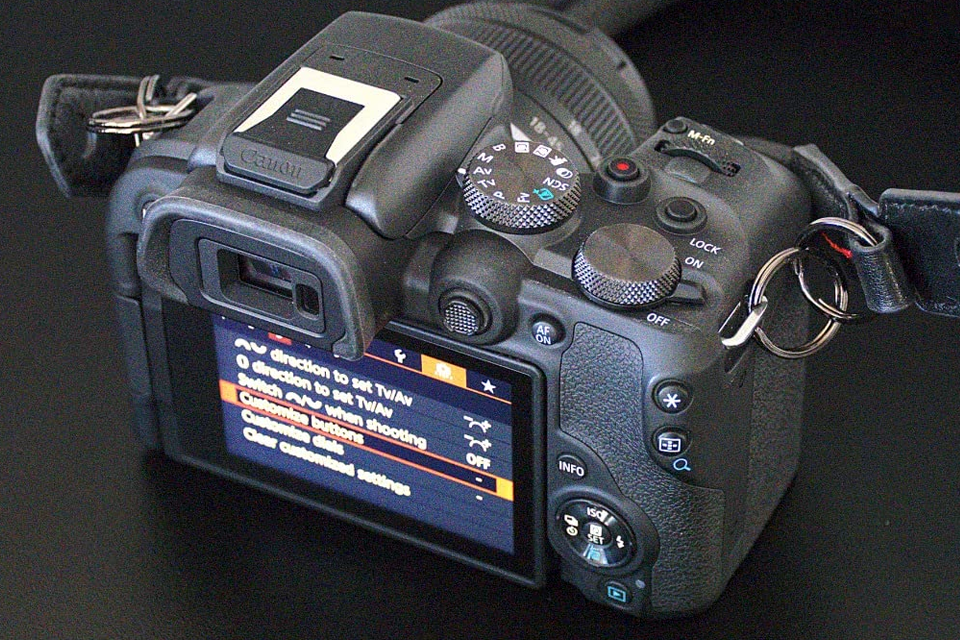
To my mind, one of the selling points of the Canon EOS R10 mirrorless camera is its autofocus system. It's very fast and accurate, considering that this camera for photography doesn’t cost a fortune. Canon has included some of the famous technology they use in their pro-level cameras, e.g., the EOS R3. I liked how AF worked when I was shooting people, pets, and cars. The eye tracking is especially handy for portraits.
This camera also has a special “People” mode. I used it to take images at a family reunion, and it worked remarkably well. I was able to capture playing kids and chatting people with clarity. The autofocus kept up with the action flawlessly. I doubted it could handle subject tracking when there were distractions in the background, but it didn’t disappoint me.
I have mixed feelings about the “Animals” mode. It works well in some situations, but it is almost useless in others. For instance, I didn’t manage to take clear shots of flying birds. Besides, when shooting pets indoors, the autofocus sometimes got confused by objects in the background.
The autofocus can work for stills, but it's not as reliable in video mode. For basic video recording, it is still adequate. However, when you try to follow a moving subject, particularly in challenging conditions like low light or busy backgrounds, it can struggle to keep up. I learned it when I tried to film my cat, as the autofocus kept jumping between him and other objects in the room.
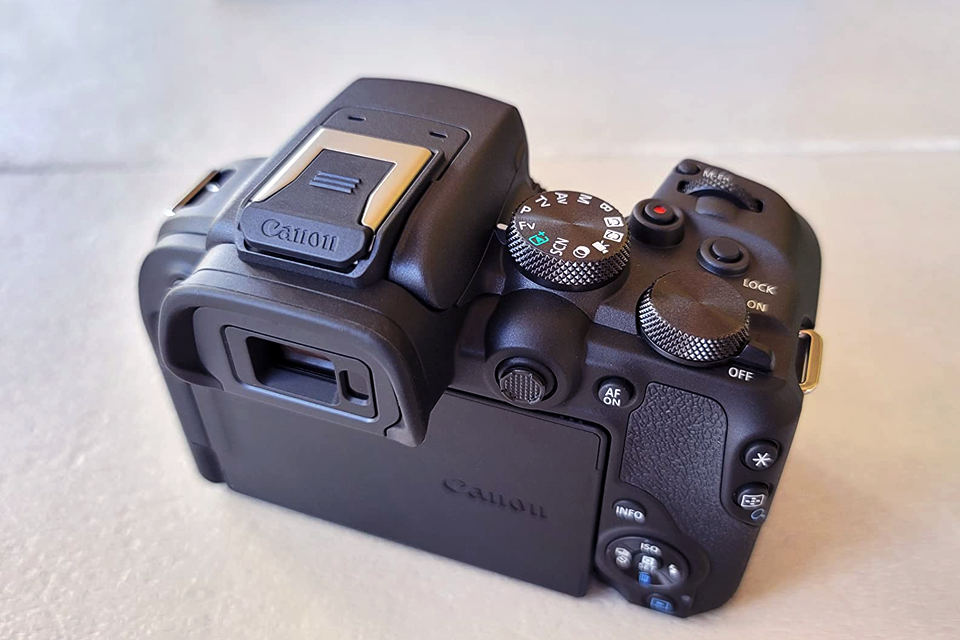
Considering the Canon R10 video specs, shooting videos was an interesting experience. The 4K 30fps is fantastic for everyday use, and the level of detail is really impressive. However, if you're looking for super smooth footage, you should opt for the 60fps mode. Just keep in mind that the 1.56x crop makes the field of view narrower, and you may notice some noise in low-light conditions.
I like that the R10 is suitable for both photography and videography, so you don’t need to purchase a separate Canon camera for video. Switching between photos and videos is an easy task. Thanks to the fully articulated screen, you can frame your shots from any angle. Such an option is great for vloggers and anyone who wants to film candid moments on the go.
This camera also has a built-in HDR video feature. Therefore, you can capture a wider range of tones and colors. Before getting down to filling, you need to choose a suitable HDR mode from 2 available options – “HDR Movie” and “HDR PQ”. These settings give you very different looks. I spent some time reading the manual to understand the difference and pick the one that suited me most in those conditions.
I can’t but mention video quality in this Canon EOS R10 review. The colors are pop, and the footage is sharp even without editing. Another benefit is the slow-motion feature. When shooting with this mirrorless camera for video, I opted for 120fps for some slow-motion videos and was truly pleased with the outcomes. Still, the autofocus can struggle a bit if you’re moving the camera around too fast. You may notice some slight rolling shutter in such situations.
While testing this 4K video camera, I was upset with the lack of image stabilization. It is necessary to find a way to keep it steady. Plus, there is no log profile, so you're a bit more limited when it comes to color grading and advanced video editing. If you're looking for a camera that's really flexible for post-production, you may want to consider other options.
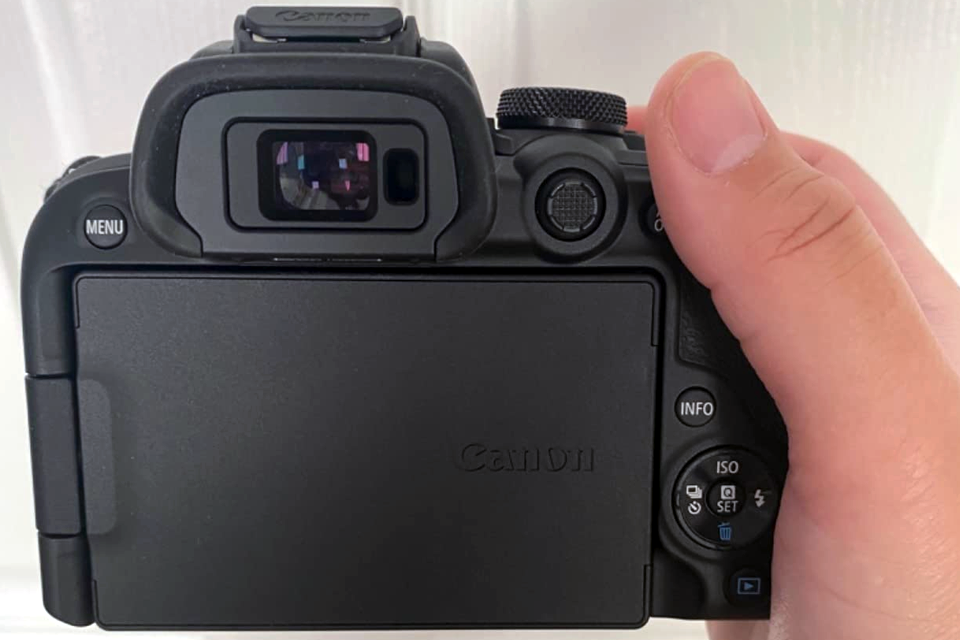
The Canon R10 battery life is a bit of a double-edged sword. The manufacturer promises that the LP-E17 battery is sufficient for 430 shots, which sounds OK. But when you're out in the field, shooting for hours in a row, you’ll understand that such claims are too optimistic. During my test, I had to bring extra batteries, especially when I was recording lots of video content.
In my opinion, the battery life of this camera is suitable for casual shooting. You can get a good number of photos or a couple of hours of video on a single charge. However, if you're planning to record a lot of video, especially in 4K or 1080p, you'll probably need to carry an extra battery. Moreover, autofocus and frequent mode switching can also drain the battery faster.
Weather conditions also have a direct impact on battery life. In warm weather, the battery lasts quite a long. But as soon as the temperature drops, the battery drains faster. So, if you're shooting outdoors in cold weather, be prepared to change batteries more often.
Another thing to keep in mind is that the R10 doesn't come with a battery grip. It may feel limiting for people, who want to prolong battery life. In other words, if you want to take photos or record videos for long periods, you should have a spare camera battery at hand. Surely this rule is applicable if you're shooting in challenging environments.
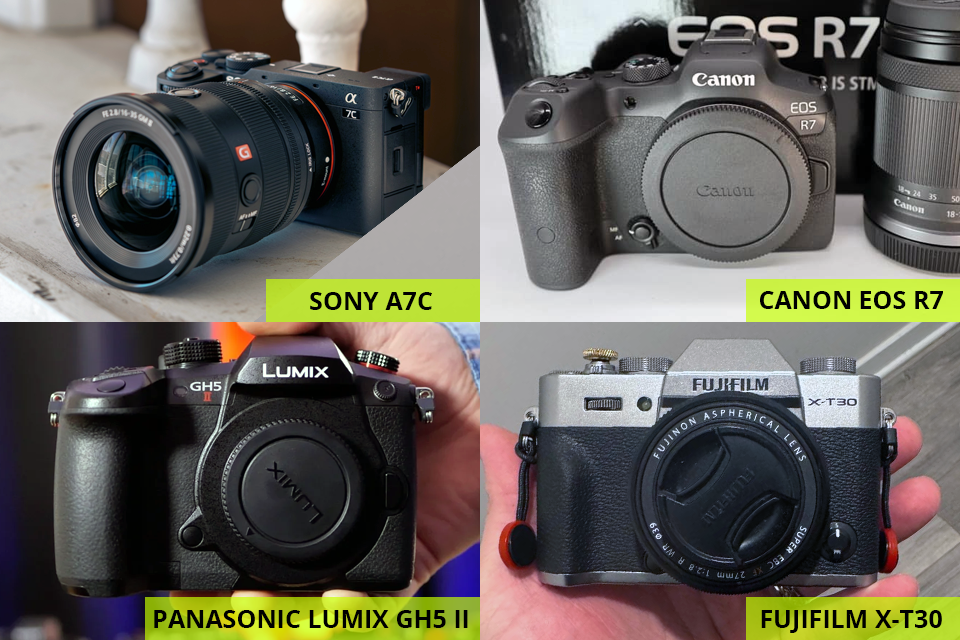
The Canon EOS R10 is a great choice, but it's not necessarily the only choice. I've scouted the market and found some other cameras that can offer different features or even perform better in certain situations. Your camera choice really depends on what you're looking for in a device.
If you're looking for a versatile camera that can handle both stills and video, you should definitely check out the Sony A6400. The image quality is top-notch. In addition, the subject tracking feature is incredibly helpful when shooting fast-paced action. It's a great option for anyone who wants a high-performance camera to work indoors and outdoors without breaking the bank.
Another worthy analog is the Sony A7C. This full-frame camera is equipped with a full-frame sensor that provides more shooting flexibility, especially in low-light conditions. The autofocus is incredibly fast and accurate, and the 4K video is absolutely stunning. Plus, it's small enough to take anywhere. If you're looking to invest in a serious camera that handles different tasks, I highly recommend the A7C.
If you don't mind paying a bit more, the Canon EOS R7 is a wonderful model. It offers a great balance of features and performance. There is a 32.5MP sensor and fast burst shooting mode at 60fps. If you're looking for a camera that can handle anything you throw at it, this is the one.
If you are searching for a decent camera for photography and videography experiments, the Panasonic GH5 II fits the bill perfectly. The 4K video is so good. It's almost like shooting with a cinema camera. The image stabilization is also a huge plus, especially when shooting on a gimbal. If you want to switch between stills and videos quickly, this micro four thirds camera can meet your needs.
For budget-conscious photographers, the Fujifilm X-T30 can be a perfect solution. It's small and light, and it can take amazing photos. The colors are super vibrant, and the 4K video is really impressive. I've been using it for everything from street photography to vlogging, and it never let me down.